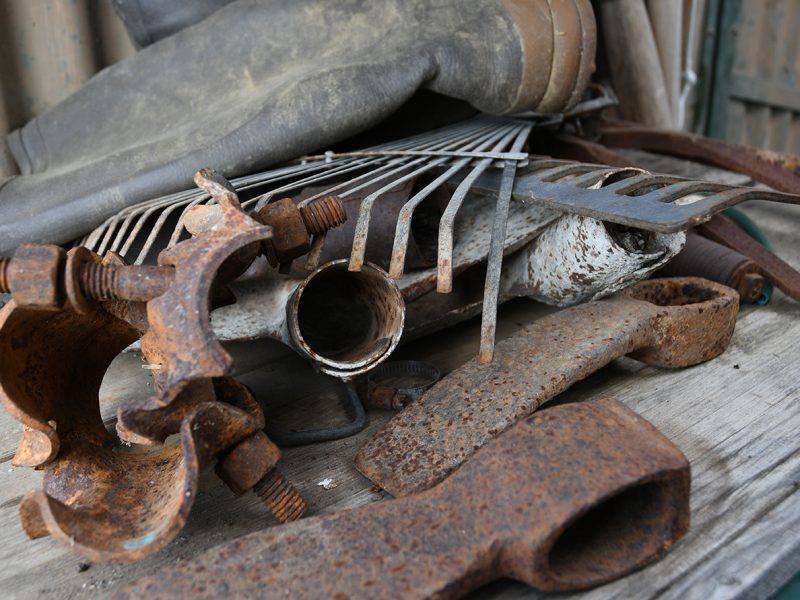It could be said, so I’ll say it here, that it’s quite likely farmers come in two types: those who save their scrap metal, and those who do not. Obviously, there are myriad further sub-types. Farmers are a complicated, thoughtful, diverse and stereotype-busting bunch and I would be the last to publicly suggest otherwise. On my farm, however, it seems we are divided by our approach to metal.
Metal is the inevitable issue of farming with all this necessary metal equipment. Left behind following modifications, strip downs and breakdowns, it seems metal begets metal. Scrap metal. Call it what you will, I don’t want to part with any of it, a position reinforced almost regularly when a new purpose is found for previously useless pieces of metal. I don’t know what the future looks like. I must keep it all.
It gets stashed. I hoard with relish and use with triumph. My personal inventory, the metal I have been involved in scrapping, is pleasingly diverse and extensive. Ranging from the smallest bits to large – in all their enormous, cumbersome and weighty glory – I even remember where most if it originated. There are shelves stuffed with nuts and bolts and random cuts. There are two or three diminishing digger chains, the links gradually being re-purposed as trellising stakes in the greenhouse and gardens. Several historical hydraulic cylinders are almost certainly stacked in a corner I haven’t been back to for a few years. A rather extensive selection of broken S-tines, bent cultivator tools and cracked cast iron items requiring repiling reside there as well. Discs with broken bearing centres are starting to line the barn walls, and old potato planter and harvester gears are in a bin so heavy it might never move again.
This year, I was very pleased to use the good end of a length of a long-ago driven-upon water pipe, which I had poked into the bushes at the time both to hide the evidence and to save for later use. I dragged it out, cut off the crushed part, and attached the remaining six feet to the line. The muddy bank on the swimming hole was thusly cleared, thereby allowing clear water to gush forth.
Good thing I kept that broken pipe, right? All you metal-throwing-out-farmer-people who cavorted in a swimmable pond during a heat wave should be thankful.
I anticipate going through the usual middle-aged creative welding phase which I hope will consume the whacks of handle-less shovels, spades, forks and rebar tidbits I have saved for this eventuality. At least, I hope it does because I need to get ahead of the growing inventory. It is a troubling fact that the other type of farmer, the one who does not save scrap metal, exists on my farm. They are active, enterprising and tend to sneak my metal off for recycling.
Anyways, I digress. What I really wanted to talk about is social media and how to constructively manage its shockingly addictive nature. Kidding. I have no idea how to do that.
I would also like to mention fall farming and how thankful I am that it has arrived. A day rarely passed in this rain-less summer, as successive heat waves followed the heat dome, where I didn’t wistfully reflect on the inevitable yet impossibly distant arrival of autumn. Not to sound too dreary about it, but I held fast to the vision of a cold, wet fall.
Sure enough, the fields are getting too muddy to work, raindrops are rolling down my neck and I am contending with cold fingers in inadequate work gloves.
It’s really all I dreamed of.
Anna Helmer’s farms in Pemberton with her family of several types.


 Wildfire 2021: ‘They keep locals in the dark. That is really problematic.’
Wildfire 2021: ‘They keep locals in the dark. That is really problematic.’